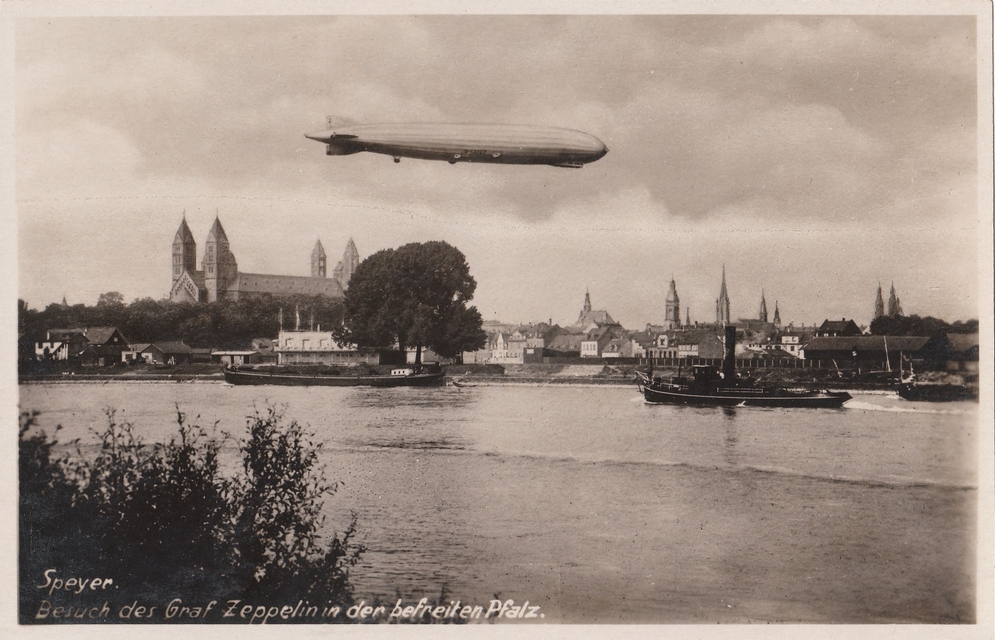
2 July 1900: First flight of the LZ, a rigid airship designed by Count Ferdinand von Zeppelin, over Lake Constance, Friedrichschafen, Germany
28 July 1914: Austria-Hungary invades Serbia while Germany invades the nations of Belgium, Luxembourg, and France. This sparks the beginnings of a Great War between the Central (Austria-Hungary, Germany) and Allied Powers (Great Britain, France, Russia, and later Italy).
1916: The war between the Allied and Central Powers has become one of bitter attrition. Neither side seems likely to break through the lines arranged along the Western Front, where hundreds of thousands have died in places such as the trenches of the Somme. The efforts of the German forces face the hindrance of a British naval blockade which can only be circumvented by air strikes over the island nation. However it seems unlikely that a breakthrough will be achieved in the skies, as the Allies have their own planes and pilots, and there are too few resources available for the Germans to mass produce aircraft. As shells, mortars, and mustard gas continue to claim more and more lives daily on the front lines, Central Command becomes desperate for a way to overcome the obstacles impeding their now seemingly dubious victory.
A solution presents itself in the form of Otto Helvig, an Austrian industrialist who has secretly managed to develop an airship construction yard in the Swiss Alps. He offers the Central forces the use of a prepared fleet of 50 airships, all much larger than normal and fully armed and supplied with crews of his own privately trained technicians. His price: a 90% share of all war industry contracts should his fleet prove succesful.

1917: After some initial strikes in western France serve as its trial by fire, the entire fleet is dispatched to the main front. The Allied forces entrenched there are swiftly decimated, and an assault on Paris commences shortly thereafter. As the City of Lights burns, Germany seizes control of the Il-de-France. The Treaty of Bordeaux is soon ratified, securing German victory over the French.
1918: The Central Powers have now claimed victories across the Middle East, Africa, and various parts of Europe, due almost entirely to Helvig's now rapidly expanding fleet. The greater part of Germany and Austria-Hungary's war machine has now been absorbed into Helvig's enterprises. By the end of the year, the Central airship fleet now numbers close to 100.
1919: Heavy airship bombardment of Great Britain has all but brought the war to a close. The entire surviving population of London has been driven into underground railway stations and shelters. Other British cities fair little better, as those that are still standing live under the constant shadow of the threat from above. The Treaty of Westminster cements the end of the war on February 12.
1919-1930: The German Empire experiences a period of expansion and dominance never before seen in its history. Otto Helvig is granted an honorary seat in the Bundesrat and his companies continue producing airships until each German state possesses at least one, with some having their own fleets. The entire German airship force now consists of approximately 230 ships which patrol Germany's holdings across the world, enforcing the Kaiser's rule.
1931: The German and Austrio-Hungarian Empires are unified under Kaiser Wilhelm II.
[BG=darkslategray]

1932: Otto Helving succumbs to a mysterious illness while staying at his Swiss chalet. It is widely suspected that he was poisoned, perhaps by Hungarian nationalists. His holdings are rapidly nationalized and his original airship plans and schematics become a closely guarded state secret.
1935: As the ever increasing number of airships have become the mainstay of German military strength, it becomes apparent that an entire generation must be conscripted into service in order to staff, service, and command them. To this end, the Luftschiffjugend is formed; a youth organization that seeks to obtain the best and brightest children of the Empire for military service. Thousands of young people flock to contribute to the glory of the Empire, and within two years the first class has graduated and been given their appointments in the fleet. The Luftschiffjugend become the envy of all German youth, such that there is no higher aspiration a young person could have. The organization is seen as the fast track to success and prominence within the Empire, and as a result millions apply for enrollment in the second and third years. For those that get in, there is still the crucible of training, education, and conditioning that they must first get through in order to graduate. Stringent regulations ensure that only the most driven and talented of students will succeed and make it through. "Die Akademie", as their training program becomes known, is not a place for the weak or faint of heart.

--------------------------------------------------------------------------------------------------------------------------------------------
Our story begins in the year 1938. A brand new class of Luftschiffjugend has been accepted, and they have a trying year ahead of them. They will live, eat, sleep, and serve on board the Akademieschiff, a series of airships linked together in a kind of train or convoy. The compartments below each ship are used for specific purposes: one is a training room, one is sleeping quarters, one is a kitchen and mess hall, etc. All in all, the Akademie consists of 12 airships, each with its own crew and commanding officer.
CHARACTER SHEET:
Name:
Age:
Personality: (Let us know how your character thinks, feels, and interacts with others)
History: (A brief history giving some background on your character, including how they came to join the Luftschiffjugend)



